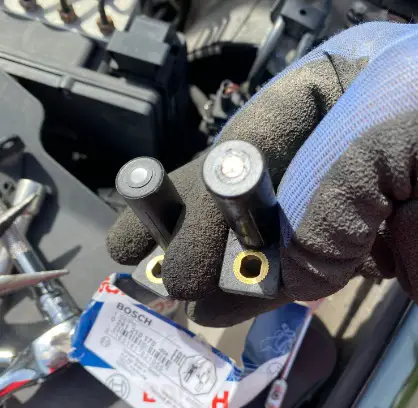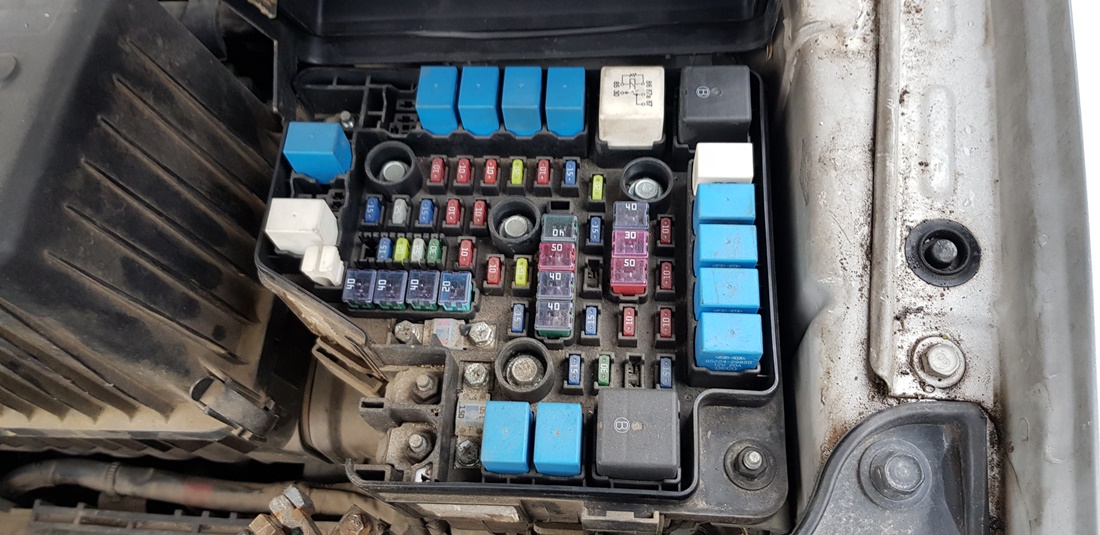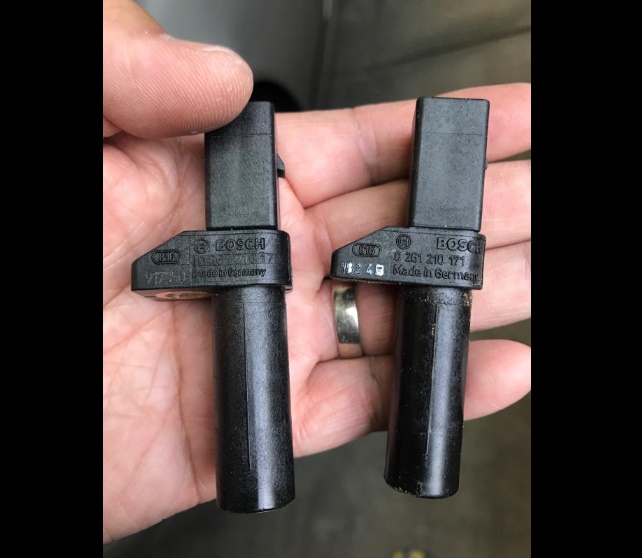Tire lock-up can be very dangerous and happens more often than we like. Many drivers are driving on the highway and suddenly their back tire locks up.
Getting to safety with a locked-up back tire can be quite challenging. But, what would cause a back tire to lock up? Is there any way to prevent this?
In this article, I am going to talk about what would cause a back tire to lock up, how to fix it, and how much it will cost you.
- Key Takeaway
- What Would Cause a Back Tire To Lock Up?
- What Does It Mean When Your Tire Doesn’t Move?
- How Can I Tell If My Back Tire Is Locked Up?
- How Can I Prevent My Back Tire From Locking Up?
- How Do You Fix a Seized Rear Wheel?
- 1. Required tools for the job
- 2. Park the vehicle on a leveled ground
- 3. Loosen the cap on the brake master cylinder
- 4. Jack the vehicle and place it on a jack stand
- 5. Remove the tire
- 6. Remove top and bottom slider pins
- 7. Visually inspect the braking assembly and try to move parts with your hands
- 8. Clean the brake parts with brake cleaner
- 9. Reinstall the brake parts
- 10. Take your vehicle on a test drive
- How Much Does It Cost To Fix Locked Brakes?
- FAQs
- In Conclusion
Key Takeaway
- A back tire can lock up due to worn-out tires, loss of traction on wet and slippery roads, seized pistons on the brake calipers, defective wheel cylinder in the brake system, failed wheel bearing, or issues with the parking brake cable, rear differential, axle, or transmission.
- If your tire doesn’t move, it could indicate a problem with the brake system, the transmission, or the wheel and axle assembly, such as a seized brake caliper, a failed transmission component, or a broken axle.
- You can prevent your back tire from locking up by ensuring proper maintenance of your brake system, avoiding sudden braking, practicing smooth and progressive braking, especially on wet or slippery surfaces, and if your vehicle has ABS (Anti-lock Braking System), learning how to use it effectively.
What Would Cause a Back Tire To Lock Up?

A blocked or seized brake caliper can cause a back tire to lock up as it prevents the brake pads from retracting, leading to constant friction and heat, which can eventually make the wheel immobile.
The brake caliper assembly uses the hydraulic force from the brake pedal to squeeze the brake pads to the rotor surfaces, thus creating friction and decelerating the wheel.
The caliper assembly consists of the caliper bracket, slider pins, dust boots, inner brake pad, outer brake pad, caliper frame, and a piston inside the caliper frame.
When you press the brake pedal, the caliper will receive a high-pressure hydraulic fluid from the brake master cylinder. This fluid will then push the piston which makes the inner brake pad squeeze against the disc rotor surface from one side and the outer brake pad from the other side.
When you release the brake pedal, the fluid then travels back from the flex hose and into the brake master cylinder.
When pistons on the brake calipers seize, they are actually applying constant braking on that particular wheel and will cause it to lock up. This can happen on a front or a back wheel. It will appear as if you are constantly pressing the brake pedal, but only one tire will lock up.
If the flex hose that supplies the brakes with pressurized fluid gets damaged, the fluid will only travel to the brake caliper where it will apply pressure, but when you release the brake pedal, the fluid will stay there and apply constant pressure and cause the back tire to lock up.
What Does It Mean When Your Tire Doesn’t Move?

If your tire doesn’t move, it means that the braking assembly on that particular tire has failed. Every vehicle has a slightly different brake assembly but most of them consist of brake calipers, brake pads, sliding pins, brake line hose, and pistons. Each of these components can contribute to a tire being locked up.
If your tire doesn’t move at all or has difficulty moving due to a faulty braking assembly, you will be able to feel a burnt smell when driving your vehicle from the brakes being constatly applied.
The pistons in the brake caliper can get seized up in the bores and it won’t allow that piston to go back, so it’s holding constant pressure on the brake pads and your tire won’t move.
Also, the brake lines that distribute the fluid from the brake master cylinder into the calipers can be damaged and only supply highly pressurized fluid to the brakes, but not from the brakes.
This means that the fluid will apply pressure to the brakes and activate them, but won’t retract the fluid once you release the braking pedal. This also results in constant pressure on one or more wheels and the tire or tires won’t move.
The slide pins for the caliper can also be the cause of your tire not moving. They have the job of sliding the caliper towards the brake pads when you press the brake pedal. However, if they get seized up in a fully activated position, that particular wheel will be locked up and won’t move.
If this is the cause, you will notice that the brake pads are not worn out evenly. The reason behind this is that there are two sliding pins on the brake calipers, and only one of them can seize up says Cash Car Buyer.
How Can I Tell If My Back Tire Is Locked Up?
- Difficulty in moving the vehicle: If your back tire is locked up, you’ll likely experience resistance or difficulty when trying to move your car forward or backward.
- Unusual noises: You may hear grinding, screeching, or squealing sounds coming from the wheel area.
- Uneven tire wear: A locked tire will experience more friction, leading to uneven or accelerated tire wear.
- Vehicle pulling to one side: If only one tire is locked, your vehicle might pull to the side of the locked tire while driving.
- Burning smell: Excessive friction can cause overheating, which might result in a burning smell.
- Brake pedal feels harder than usual: Since the brakes are essentially “stuck” on a locked tire, it may feel harder to depress the brake pedal.
- Skid marks: If your tire is locked while the vehicle is in motion, it could leave skid marks on the road surface.
Can I Prevent My Back Tire From Locking Up?
- Regular maintenance: Regularly inspect and maintain your vehicle, especially the braking system. This includes checking the brake fluid level and the condition of the brake pads.
- Tire care: Ensure your tires are in good condition and properly inflated. Regularly check for any signs of wear or damage.
- Brake usage: Avoid sudden or harsh braking when possible. Instead, aim to brake gently and progressively.
- Adequate lubrication: Make sure all moving parts of the brake system are adequately lubricated to prevent seizing.
- Professional inspection: Have a professional mechanic inspect your vehicle, especially if you notice any signs of potential issues such as unusual noises or changes in braking performance.
- Replace worn parts: Replace any worn or damaged parts promptly. This includes brake pads, calipers, rotors, and any other parts of the braking system.
- Use of quality parts: When replacing parts, always use high-quality, reliable components to ensure proper functioning.
- Safe driving: Practice safe driving habits such as maintaining a safe distance from other vehicles, which can reduce the need for sudden braking.
How Do You Fix a Seized Rear Wheel?

- Park the vehicle on the leveled ground and engage the parking brake.
- Losen the cap on the brake master cylinder to allow air.
- Jack the vehicle and place it on a jack stand.
- Remove the wheel.
- Remove the top and bottom slider pins on the caliper.
- Visually inspect the braking assembly and try to move parts with your hands.
- Clean the brake parts with brake cleaner.
- Reinstall the wheel.
- Take the vehicle for a test drive.
Driving with a seized rear wheel is merely impossible and has to be dealt with immediately. However, many of us don’t know what to do once we encounter this issue. That is why I am going to show you how to fix a seized rear wheel without any special mechanic skills.
1. Required tools for the job
- Jack
- Jack stands
- Wrench
- Brake cleaner
2. Park the vehicle on a leveled ground
Since we will be removing the seized rear wheel in order to fix the issue, we will need to jack up the vehicle. It is very important that your vehicle is parked on level ground and is in gear. You don’t want to apply the hand brake because it will create pressure on the brakes.
You won’t be able to release the rear caliper from the disc at the back. Just block the vehicle from moving by placing stones behind the tires. Make sure that the vehicle is actually parked on a hard surface and not on a dirt road because the jack will sink into the ground.
3. Loosen the cap on the brake master cylinder

Before we proceed with dealing with the seized rear wheel, we need to loosen the cap on the brake master cylinder.
The reason why I like doing so is that loosening the cap, just breaks the air seal so when you are squeezing the caliper on the rear of the car, it lets the brake fluid travel in the master cylinder reservoir without any pressure stopping it from traveling up the system. Just make sure to remember to tighten the cap once you are done with this task.
The brake master cylinder is located under the hood and on top of the braking system. It has a plastic cap on top of it that is labeled with Braking Fluid or some other wording related to that.
4. Jack the vehicle and place it on a jack stand
To find the jacking points on your vehicle, you will need to check the owner’s manual. Usually, there is a jacking point right next to each wheel. Once you have located the jacking point next to the seized wheel, jack it up and place it on the jack stands for safety.
5. Remove the tire

Once the vehicle has been secured on a jack stand, grab a wrench and remove the tire. The most common thread sizes are 10mm, 12mm, 14mm, 7/16″, 1/2″, 9/16″, 5/8″. Once you’ve done that, place the wheel somewhere out of the working zone.
6. Remove top and bottom slider pins

The caliper is secured in place by two slider pins that have 4-3/8” bolts. One is on top of the caliper and another is on the bottom. So, grab the corresponding wrench and remove both bolts. At this point, the caliper will come out completely.
7. Visually inspect the braking assembly and try to move parts with your hands
So, basically, right now you are looking at the braking assembly on the rear wheel. Inspect the brake pads and just see how hard it will be to actually remove them.
If they seem rusty or stuck, take them out for cleaning. Next, move the sliding pins. They should be able to move quite freely. If they are not, just pull them out and prepare them for cleaning.
8. Clean the brake parts with brake cleaner

Start by cleaning the brake pads and the shims that the brake pads sit on. Make sure to remove any grease or rust. Then, move on to cleaning the slider pins. But also make sure to clean the housing where the slider pins sit in. The piston inside the caliper will also require cleaning.
Overall, just completely spray the whole braking assembly with the brake cleaner and let the components dry before reinstalling them.
9. Reinstall the brake parts
Once all of the brake parts have been cleaned, it is time to reinstall them. Insert the brake pads on the shims, and insert the slider pins back in. Reinstall the two bolts that hold the caliper in place. Reinstall the tire and tighten the bolts. Also, make sure to tighten the cap on the master brake cylinder.
10. Take your vehicle on a test drive
This is very important. When working on your brakes, there could be a possibility that you have somehow installed some part of the braking assembly incorrectly. What I always do when I first take the vehicle on a test drive after fixing the brakes is apply the brakes before moving.
So, put your vehicle in neutral and apply the brakes, to see if they work. If the brakes are working then take the car out and see if the rear tire is spinning correctly.
How Much Does It Cost To Fix Locked Brakes?
The cost of fixing locked brakes depends on which part of the braking assembly has failed. Replacing a single caliper can cost up to $110. The rubber bushings on the sliding pins cost around $10 per wheel whereas the actual sliding pins can cost up to $12 per wheel. Most brake pads cost around $30, but you can get high-quality ones for $60.
Getting your locked brakes fixed at the mechanic usually costs around $60, but it will cost you none if you do it yourself.
FAQs
Q: Can a stuck parking brake cause a back tire to lock up?
A: Yes, a stuck parking brake can cause a back tire to lock up. The parking brake, also known as the handbrake, is designed to keep the vehicle stationary when parked. If the parking brake is not releasing properly, it can cause the back tire to remain engaged with the brake mechanism, resulting in a locked-up tire. If you suspect that the parking brake is the issue, it’s recommended to have it inspected and repaired by a professional mechanic.
Q: Can a low tire pressure cause a back tire to lock up?
A: No, low tire pressure typically does not cause a back tire to lock up. Low tire pressure can affect the handling and performance of the vehicle, but it wouldn’t directly cause a tire to lock up. The main culprits for a locked-up back tire are usually related to the braking system or the parking brake, as mentioned earlier. If you suspect low tire pressure, it’s important to address it promptly by inflating the tires to the recommended pressure levels.
Q: Is it dangerous to drive with a back tire that is locked up?
A: Yes, it is dangerous to drive with a back tire that is locked up. When a tire is locked up, it significantly reduces your ability to control the vehicle. This can lead to skidding, loss of steering control, and an increased risk of accidents. If you notice that your back tire is locked up, it’s important to pull over and address the issue immediately. It is generally recommended to have the vehicle towed to a mechanic for proper inspection and repairs.
Q: How much does it cost to fix a back tire that is locked up?
A: The cost to fix a back tire that is locked up can vary depending on the underlying cause of the issue and the extent of the damage. If the problem is simply worn brake pads or a minor brake system malfunction, the cost might be relatively low. However, if there are more significant issues, such as a seized caliper or a faulty ABS module, the repair costs can be higher.
Q: Can I fix a locked-up back tire myself?
A: Fixing a locked-up back tire can be a complex task that requires specialized knowledge and tools. Unless you have experience and expertise in automotive repairs, it is generally not recommended to attempt fixing it yourself. Incorrectly addressing the issue can lead to further damage or compromise the safety of the vehicle. It’s best to seek assistance from a qualified mechanic who can properly diagnose and repair the problem.
Q: What should I do if my back tire locks up while driving?
A: If your back tire locks up while driving, it’s important to stay calm and take the following steps: – Do not panic and avoid making sudden movements. – Gradually release the pressure from the brake pedal to allow the tire to regain traction. – Steer gently in the direction you want to go, but avoid overcorrecting. – Once the tire regains traction, gradually apply the brakes again, if needed. – Pull over and have the vehicle inspected by a mechanic as soon as possible to determine the cause of the lock-up and address the issue.
Q: Can a locked-up back tire be a symptom of a more serious problem?
A: Yes, a locked-up back tire can be a symptom of a more serious underlying problem with the vehicle’s braking system or other related components. Issues such as a seized caliper, brake fluid leak, or a malfunctioning ABS module could contribute to the tire lock-up.
In Conclusion
The most common causes of a back tire locking up are related to brake system issues, such as worn-out brake pads or fluid leaks.
Another possibility is that the wheel bearings have gone bad, causing them to seize and lock up the wheel.
If you suspect that your back tire has locked up due to any of these causes, it is important to get it checked by a professional as soon as possible.




